Polystyrene foam, a versatile and widely used material, comes in two primary forms: Expanded Polystyrene (EPS) and Extruded Polystyrene (XPS). Integral in various industries, especially construction and packaging, due to their thermal insulation properties, durability, and cost-effectiveness, EPS and XPS have distinct characteristics that make each suitable for specific applications. This article provides an in-depth analysis of both materials, comparing their composition, performance, environmental impact, and best-use scenarios, aiding you in making informed decisions for your insulation needs. We’ll specifically delve into the core differences, such as XPS vs EPS insulation, EPS vs XPS thermal conductivity, and the overall characteristics of expanded vs extruded polystyrene.
Understanding EPS and XPS
Expanded Polystyrene (EPS) is a lightweight and rigid foam derived from polystyrene beads, which are expanded with steam and subsequently shaped into blocks or various forms. Renowned for its superior thermal insulation capabilities, moisture resistance, and affordability, EPS finds widespread application in packaging, construction, and numerous industrial sectors. When discussing EPS vs XPS foam, EPS represents the more open-cell, bead-molded option.
In contrast, Extruded Polystyrene (XPS) is created through a continuous extrusion process that yields a dense, closed-cell foam. This method imparts greater compressive strength and reduced water absorption to XPS, making it particularly suitable for demanding insulation applications, such as installation beneath concrete slabs and within foundation walls. This is a key distinction in XPS insulation vs EPS.
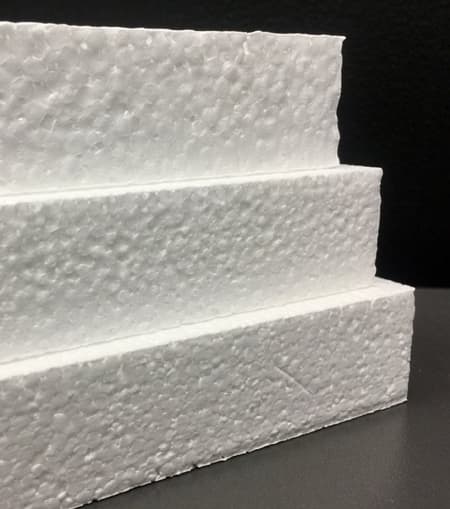
EPS-FOAM
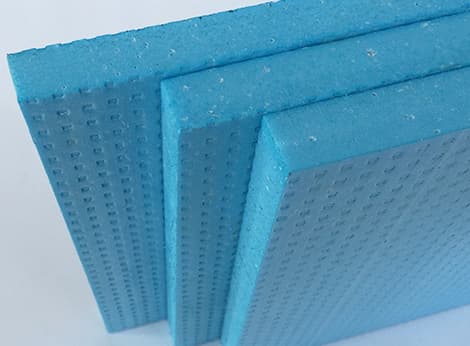
XPS-FOAM
What are the main differences between EPS & XPS?
The main differences between Expanded Polystyrene (EPS) and Extruded Polystyrene (XPS) insulation lie in their manufacturing processes, physical properties, performance characteristics, and applications. Here’s a detailed comparison of XPS vs EPS:
| Aspect | EPS | XPS |
|---|---|---|
| Manufacturing Process | Made from expanded beads fused together using steam. | Made from extruded polystyrene, continuous sheet. |
| Density | Lower density, less rigid. | Higher density, more rigid. |
| Moisture Resistance | More susceptible to moisture absorption. | Superior moisture resistance due to closed-cell structure. |
| Thermal Conductivity | R-value of 3.6 to 4.2 per inch. | R-value of approximately 5 per inch. |
| Compressive Strength | Lower compressive strength; heavier EPS is needed for heavy loads. | Greater compressive strength, suitable for heavy loads. |
| Applications | Used in walls, roofs, foundations, and packaging. | Used in high-performance applications, below-grade, flat roofs. |
| Cost | Generally less expensive. | Typically more expensive. |
This table clearly highlights why the choice between EPS versus XPS is critical for specific project needs.
Manufacturing Process: XPS vs EPS
EPS is created by expanding and fusing small polystyrene beads in molds using steam, which leads to a foam characterized by air pockets and irregular interstitial spaces, yielding a less uniform structure. This gives expanded polystyrene its characteristic appearance.
In contrast, XPS is manufactured via an extrusion process where melted polystyrene is pushed through a die to form a continuous sheet, resulting in a closed-cell structure that features a smooth surface, thereby improving its strength and moisture resistance. This manufacturing difference is fundamental to understanding the varying properties of extruded polystyrene vs expanded polystyrene.
Physical Properties: xps vs eps
When comparing the physical properties of XPS vs EPS foam, several key aspects stand out, influencing their suitability for various applications.
1. Thermal Conductivity
Both materials exhibit commendable thermal insulation characteristics; however, XPS tends to surpass EPS in this aspect. Understanding EPS vs XPS thermal conductivity is vital for insulation performance. The thermal conductivity (λ-value) of XPS generally falls between 0.026 and 0.036 W/mK, while EPS ranges from 0.032 to 0.040 W/mK. Consequently, for equivalent thicknesses, XPS delivers marginally superior insulation performance.
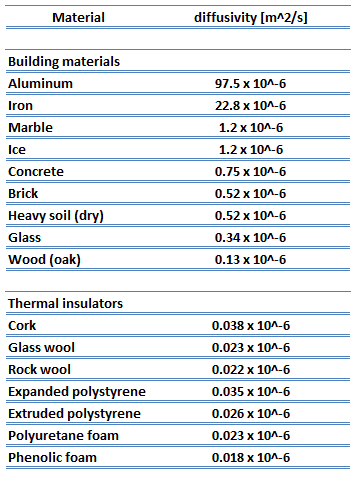
2. R-Value Comparison
In terms of thermal efficiency, both Expanded Polystyrene and Extruded Polystyrene demonstrate commendable insulation properties, yet their R-values exhibit notable differences. The R-value serves as an indicator of a material’s ability to resist heat transfer; thus, a higher R-value signifies enhanced insulation performance.
EPS generally presents an R-value between 3.6 and 4.2 per inch, which varies based on its density and formulation, making it a viable option for numerous insulation needs, particularly in budget-sensitive projects. Conversely, XPS typically offers a higher R-value of approximately 5.0 per inch, rendering it particularly suitable for scenarios where space constraints necessitate optimal insulation levels. This distinction is central to the XPS vs EPS insulation discussion.
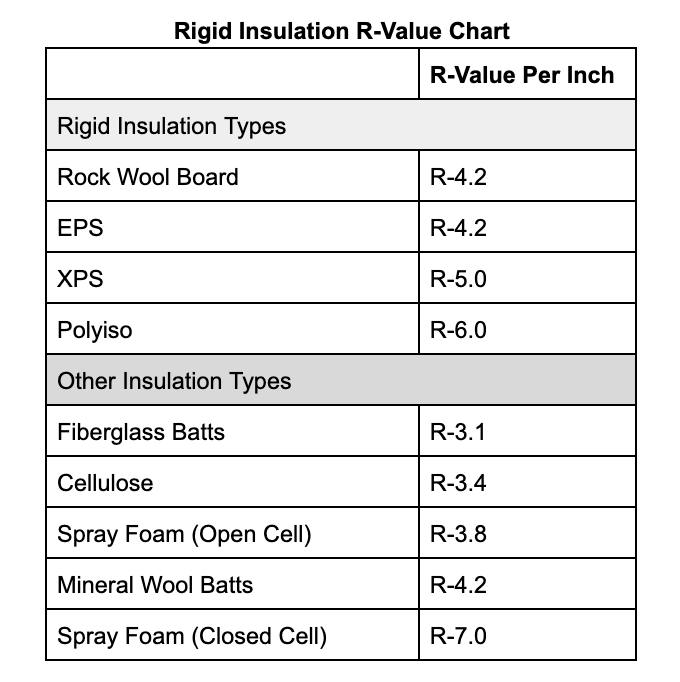
3. Moisture Resistance
Moisture resistance plays a vital role in the selection of insulation materials, especially in regions that experience high humidity or frequent water exposure. Expanded Polystyrene exhibits a greater rate of moisture absorption than Extruded Polystyrene. While EPS is somewhat water-resistant, extended exposure can compromise its thermal efficiency. Therefore, ensuring proper installation and incorporating protective barriers are crucial when utilizing EPS in environments susceptible to moisture.
Conversely, XPS demonstrates superior moisture resistance due to its closed-cell structure, which minimizes water absorption. This property renders XPS particularly suitable for applications such as below-grade insulation and areas that are regularly exposed to water, including foundation walls and beneath concrete slabs. This is a primary reason for choosing XPS insulation vs EPS in wet environments.
4. Compressive Strength
The compressive strength of insulation materials is essential in scenarios where structural integrity is required. EPS demonstrates moderate compressive strength, generally falling between 10 to 30 psi, contingent upon the foam’s density. Although it is adequate for various uses, it may fall short in high-load environments.
In contrast, XPS exhibits superior compressive strength, frequently surpassing 25 psi and achieving up to 60 psi in high-density variants. This characteristic renders XPS particularly suitable for rigorous applications, including those involving substantial loads in commercial and infrastructural developments.
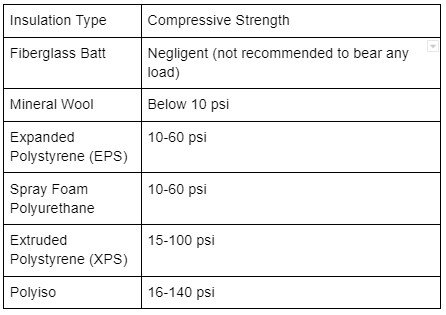
5. Density
XPS typically boasts a higher density than EPS, ranging from 28 to 45 kg/m³. This increased density translates to superior compressive strength, making XPS an excellent choice for load-bearing applications. EPS, with its lower density of 15 to 35 kg/m³, offers a lighter weight option but sacrifices some strength in the process. This density difference is a key factor when evaluating XPS vs EPS foam.
Environmental Impact
As the significance of sustainability in construction continues to rise, the ecological implications of insulation materials warrant careful examination. EPS is frequently viewed as a more sustainable option due to its reduced embodied energy and recyclability. Numerous manufacturers have implemented recycling initiatives for EPS waste, thereby mitigating its landfill impact. Furthermore, EPS does not contain hydrofluorocarbons (HFCs), which pose a threat to the ozone layer. This makes EPS a strong contender in the eps versus xps environmental debate.
In contrast, XPS has come under scrutiny for its environmental footprint, primarily due to the HFCs used in its production, which contribute to greenhouse gas emissions. Nevertheless, some manufacturers are adopting more eco-friendly practices, including the utilization of alternative blowing agents, making it essential to assess the specific product and manufacturer when determining the environmental effects of XPS. This is an evolving aspect of the expanded vs extruded polystyrene comparison.
EPS vs XPS cost
Cost plays a crucial role in the selection of insulation materials, with EPS and XPS offering distinct pricing models. The financial implications of these materials can significantly influence project budgets and overall feasibility. EPS is often regarded as a more economical choice compared to XPS, appealing to projects with financial constraints. Its competitive pricing, along with satisfactory thermal efficiency, renders EPS a favored option for both residential and commercial insulation needs.
Conversely, XPS, while typically more costly, provides enhanced performance attributes that may warrant the higher investment in certain scenarios. For applications demanding exceptional compressive strength, moisture resistance, and sustained thermal efficiency, the premium associated with XPS may be justified. This cost consideration is vital when weighing XPS vs EPS insulation.
Performance Attributes: eps vs xps insulation
Beyond basic physical properties, certain performance attributes differentiate EPS vs XPS insulation in real-world applications.
1. Long-term Thermal Performance
Over time, the insulation performance of both materials can degrade due to various factors. However, XPS tends to maintain its thermal resistance better than EPS. This is partly due to its superior resistance to moisture absorption, which can significantly impact insulation effectiveness. This contributes to the argument for XPS vs EPS thermal conductivity stability.
2. Freeze-Thaw Resistance
In applications where freeze-thaw cycles are a concern, XPS demonstrates superior performance. Its closed-cell structure and low water absorption rate make it highly resistant to damage from repeated freezing and thawing, maintaining its insulative properties and structural integrity over time. This makes XPS a more robust choice for certain conditions when considering XPS vs EPS.
3. Fire Performance
Both EPS and XPS are combustible materials and require proper fire protection measures in building applications. However, both can be treated with flame retardants to improve their fire performance. It’s worth noting that the specific fire ratings can vary depending on the manufacturer and the exact formulation of the product.
Applications: expanded vs extruded polystyrene
Understanding the specific applications of EPS and XPS can further clarify their respective advantages.
Understanding the specific applications of EPS and XPS can further clarify their respective advantages in the world of expanded vs extruded polystyrene.
Expanded Polystyrene is frequently utilized for insulation in various structural components such as walls, roofs, and foundations, particularly when cost efficiency is a primary concern. Additionally, it finds applications in packaging and as a lightweight fill material. Its lightweight nature and ease of handling render EPS a versatile choice for numerous construction projects.
Extruded Polystyrene is favored for insulation applications that demand high performance, especially in environments with significant moisture exposure or where maintaining structural integrity is essential. It is commonly employed in below-grade installations, flat roofing systems, and other situations where durability and resistance to moisture are critical factors. This clearly showcases the distinct use cases for XPS vs EPS insulation.
Installation and Handling: extruded vs expanded polystyrene
EPS is generally easier to cut and shape on-site, making it more forgiving for complex geometries or DIY applications. Its lighter weight also simplifies handling and transportation. This ease of use is a benefit when choosing expanded polystyrene vs extruded polystyrene.
XPS, while still workable, requires more effort to cut and shape due to its denser structure. However, XPS boards often come with tongue-and-groove edges, facilitating tighter connections between panels and potentially reducing thermal bridging. This feature can be advantageous for achieving superior insulation performance.
Conclusion
In summary, while both EPS and XPS are effective insulation materials made from polystyrene, they differ significantly in their manufacturing processes, physical properties like moisture resistance and compressive strength, as well as their suitability for various applications. The selection between them, whether it’s eps vs xps, xps vs eps insulation, or the specific properties of eps vs xps thermal conductivity or eps vs xps foam, should be based on specific project requirements such as budget, environmental conditions, and performance needs. By understanding these distinctions, you can make an informed choice for your next project.
“@context”: “https://schema.org”,
“@type”: “FAQPage”,
“mainEntity”: [{
“@type”: “Question”,
“name”: “Which is better XPS or EPS?”,
“acceptedAnswer”: {
“@type”: “Answer”,
“text”: “XPS (extruded polystyrene) is generally more durable and has a higher R-value, improving moisture resistance and structural strength. EPS (expanded polystyrene) is more affordable and eco-friendly, offering good insulation at a lower cost.”
}
},{
“@type”: “Question”,
“name”: “Is XPS more expensive than EPS?”,
“acceptedAnswer”: {
“@type”: “Answer”,
“text”: “Yes, XPS (extruded polystyrene) is generally more expensive than EPS (expanded polystyrene) due to its higher density, better insulation properties, and greater durability.”
}
},{
“@type”: “Question”,
“name”: “What is the disadvantage of EPS foam?”,
“acceptedAnswer”: {
“@type”: “Answer”,
“text”: “EPS foam (expanded polystyrene) has several disadvantages, including lower structural strength compared to XPS, susceptibility to moisture absorption, and a tendency to break or crumble under pressure. Additionally, it is less environmentally friendly due to its longer decomposition time and potential for releasing harmful chemicals when burned.”
}
},{
“@type”: “Question”,
“name”: “What are the disadvantages of XPS foam?”,
“acceptedAnswer”: {
“@type”: “Answer”,
“text”: “XPS foam (extruded polystyrene) has a few disadvantages, including higher cost compared to EPS, potential for off-gassing of harmful chemicals, and lower permeability, which can trap moisture and lead to mold growth if not properly installed. Additionally, it is less environmentally friendly due to its production process and difficulty in recycling.”
}
}] }

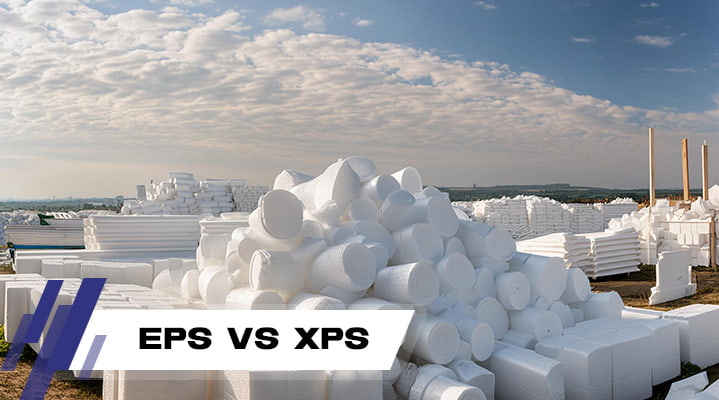
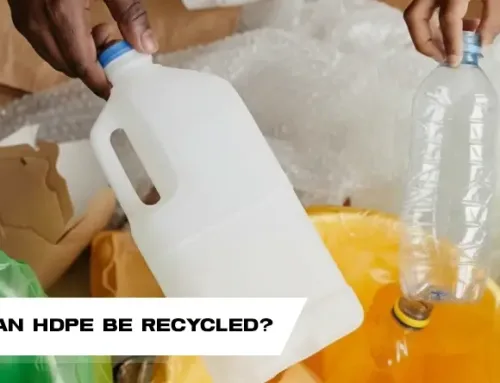



Leave A Comment